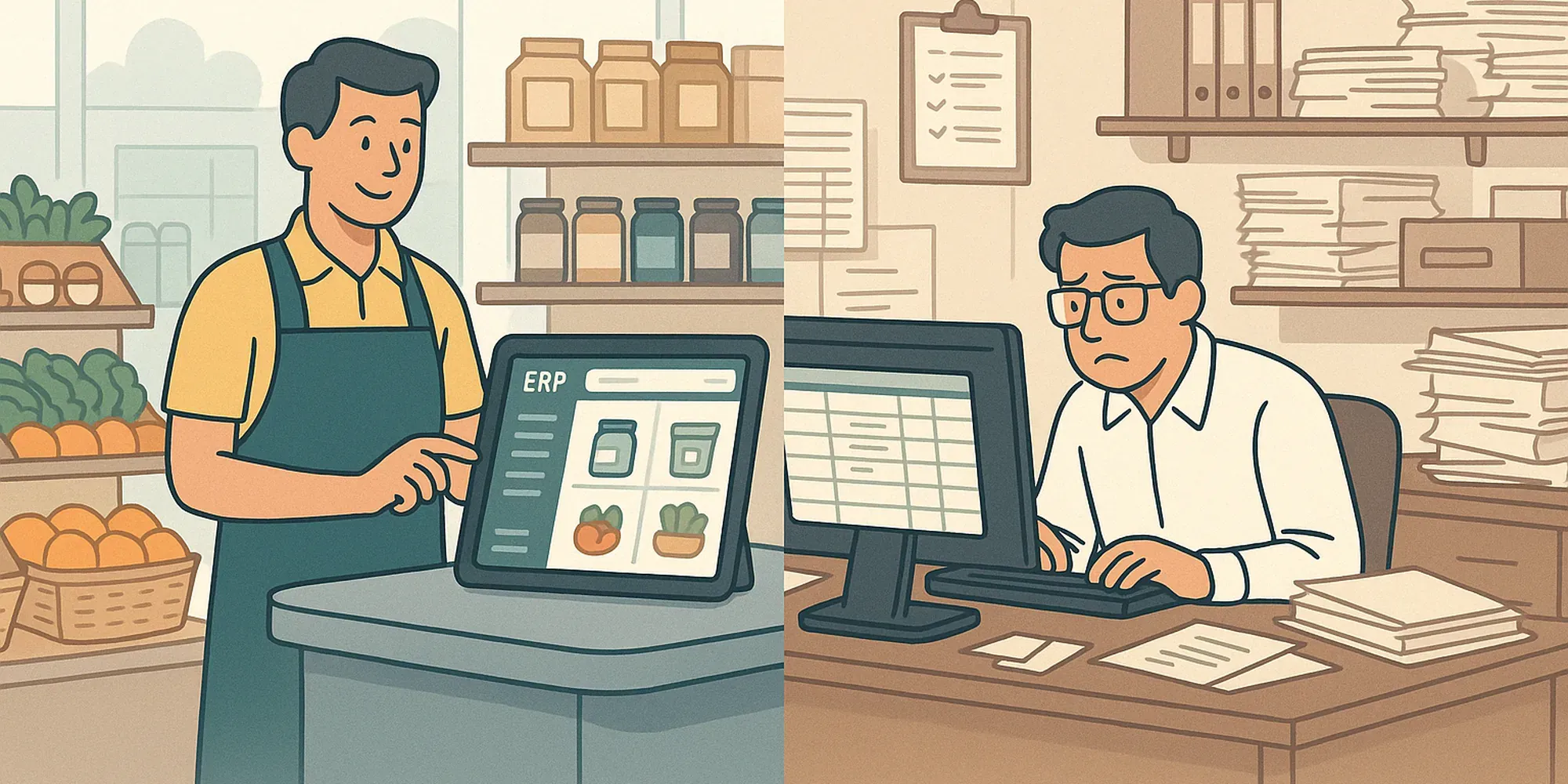Why You Should Consider an ERP for Grocery and Wholefood Stores
Running a grocery or wholefood store isn’t simple. You’re juggling perishables, bulk items, retail pricing, loyalty programs, deliveries, supplier orders, in-store stock, and (probably) a POS system that’s doing its best — but not really keeping up.

Running a grocery or wholefood store isn’t simple.
You’re juggling perishables, bulk items, retail pricing, loyalty programs, deliveries, supplier orders, in-store stock, and (probably) a POS system that’s doing its best — but not really keeping up.
Most stores start with the basics: a POS, a spreadsheet for orders, and a good memory. But as you grow, the cracks show fast.
That’s when an ERP system (Enterprise Resource Planning) stops sounding “too big” — and starts making sense.
What does an ERP actually do for a grocery or wholefood store?
Let’s get one thing clear — this isn’t about enterprise-level complexity. The right ERP simplifies things.
For stores like yours, an ERP like Supply’d helps you:
- Track live stock levels across retail and wholesale channels
- Order from all your suppliers in one place, without bouncing between emails, PDFs, and phone calls
- Manage bulk goods and packaging (by weight, each, or pack size)
- Set promos with start and end dates that sync to your POS
- See what’s working with real-time margin and product reports
Basically, it replaces five systems, five spreadsheets, and a lot of late-night guesswork.
Why it matters more in the wholefoods space
Wholefood retailers and grocers have unique challenges:
- High product variety (with low stock of each)
- Hundreds of suppliers with products available from different suppliers with different pricing and carton quantities
- Fast-expiring stock
- Complex pricing for bulk, package, and promotional items
- Often selling to both retail and wholesale customers
If you’re still relying on spreadsheets or POS add-ons to manage all that, it’s only a matter of time before errors creep in — or someone has a meltdown trying to track batch numbers and stock on a Friday afternoon.
Bottom line
If your grocery or wholefood store is growing — or if you’re just sick of duct-taped systems — it might be time to look at an ERP made for your business.
Supply’d helps you run smarter, not harder.
See how it works →

